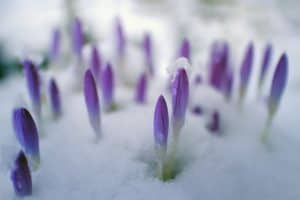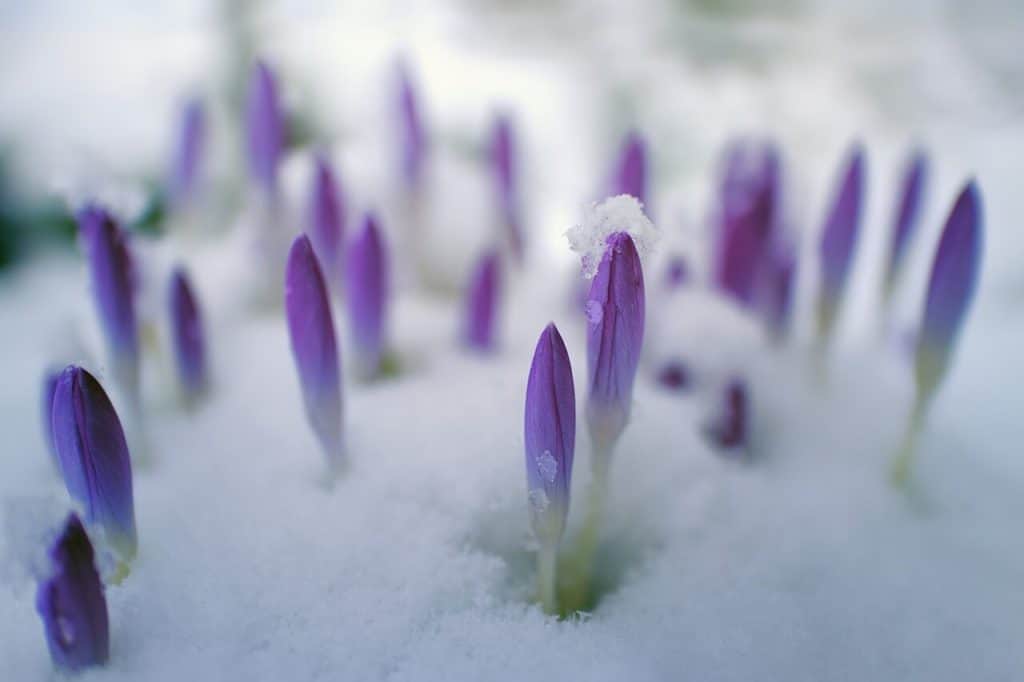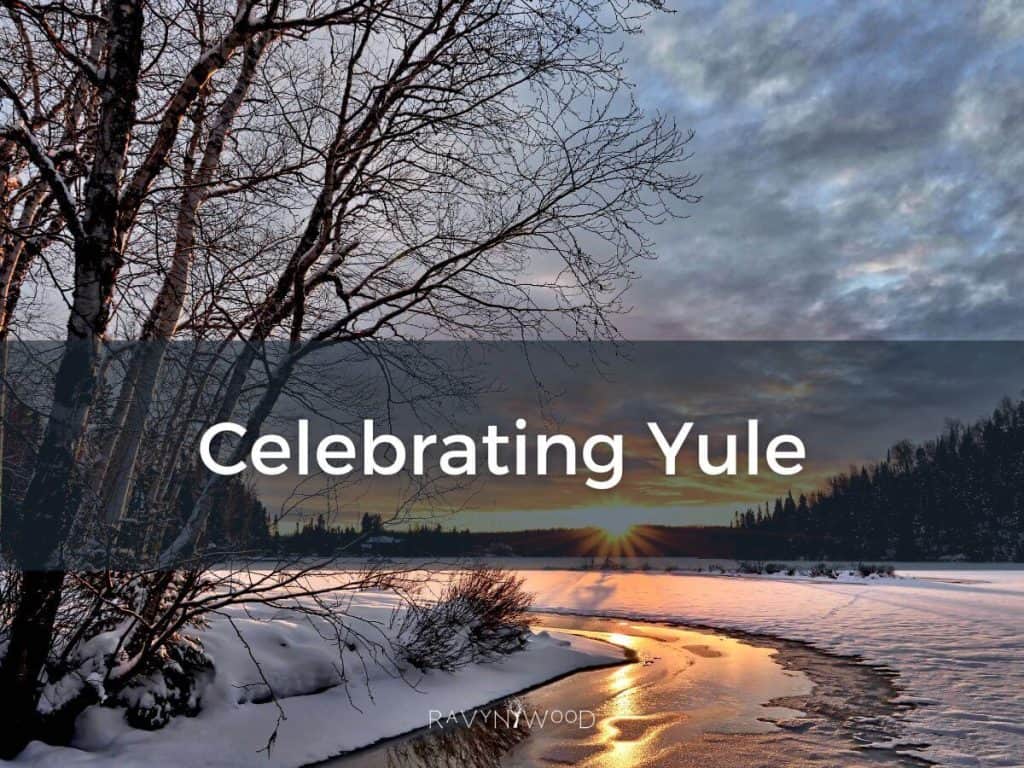Imbolc arrives to greet us after a long winter of rest and reflection. Nature beckons us to begin waking up alongside Mother Earth and her beings.
In February, the first signs of spring begin to be visible to us. The thawing of the snow and ice, the migrations of geese, and that feeling the air takes on as spring approaches all signal that the change of seasons is near.
We celebrate the festival of Imbolc.
A Brief History of Imbolc
Imbolc is one of the eight sabbats (holidays) in the Celtic Wheel of the Year. This festival from Gaelic traditions marks the halfway point between the winter solstice and the spring equinox. It’s a time of renewal, purification, and new beginnings, often celebrated with rituals and traditions that honor the returning light and the coming of spring.
It’s celebrated on either February 1 or 2, depending upon the traditions you follow. In modern pagan practices, we commonly celebrate on February 2 but our ancestors would begin the celebrations at dusk the day before. Do what works for you.
Imbolc is one of four cross-quarter days in the Celtic calendar. Cross-quarter days are the days that fall midway between solstices and equinoxes. The 4 quarter days mark the beginning of the seasons. At Imbolc, we are halfway between winter and spring in terms of light and dark. We experience increasing daylight hours between December 21 and June 21 and decreasing daylight between June 21 and December 21.
Imbolc has traditionally been a time to celebrate fertility. Many farmers would do this by bringing the animals in to mate. It’s also a time of planting seeds (both figurative and literal seeds). Among the traditions for Imbolc were balefires (bonfires) in honor of the Sun God Belenos, who died at this time and was reborn at Beltane. (May 1)
Now, though, this holiday is associated with the goddess Brigid.
The word Imbolc derives from the Old Irish word that means “in the belly” or “in the womb”.
About Brigid
Brigid is a goddess from Celtic mythology. She’s often associated with fire, the hearth, and the home. She has a lot of other associations, including fertility and abundance. She’s often depicted holding a sheaf of corn or a bowl of milk, and is often invoked for protection, healing, and creativity.
Brigid is sometimes described as a triple goddess,” meaning that she has 3 different aspects, each representing different aspects of her power and influence. In some traditions, the triple goddess is seen as representing the three stages of a woman’s life (maiden, mother, crone), while in others she is seen as representing different aspects of the natural world (like the waxing, full and waning moon). Two other triple goddesses are Hecate and Durga.
Some of the associations of Brigid:
- Fire
- Hearth
- Home
- Fertility
- Abundance
- Healing
- Wisdom & Poetry
- Creativity
How Imbolc Connects to Groundhog Day
In my area of the world, Punxsutawney Phil predicts the weather each year on Groundhog Day, which falls on February 2. The lore says that if he sees his shadow, we have 6 more weeks of winter. If he doesn’t, then spring has arrived.
This tradition is actually rooted in Candlemas, which is the Christian tradition observed on this day. The weather on that festival day was said to predict the weather for the next 6 weeks.

5 Simple Ways to Celebrate Imbolc
Here are a few simple ideas to celebrate Imbolc:
- Light a candle: One of the most common ways to celebrate Imbolc is to light a candle to symbolize the return of the light and the coming of spring. You can do this as part of a ritual or on its own.
- Decorate with spring flowers: You can bring a bit of the outdoors in by decorating your home with spring flowers. This can help bring a sense of renewal and vitality to your space.
- Create an altar space: A seasonal altar that is decorated with items that represent the themes of Imbolc. You might choose candles, crystals, found items from nature that feel right to you or images of the goddess Brigid.
Here’s a fun thing to try: Use bake-at-home clay to create a statue for your altar that depicts the goddess Brigid.
- Spring cleaning: Since this is a time of purification and renewal, this is the best time to do a thorough and magickal spring cleaning of your home. You can clear out any negative energy and create a sense of freshness for the coming season. If you need some inspiration, pick up this Magickal Cleaning Checklist from my friend, Brandi at WitchyThyme.
- Reflect and set new intentions: Consider what you want to create in the year ahead.
Here’s a journal prompt to get you started: What have you been incubating over the long days of winter that you’re ready to now bring to life?
A Practicing Wise Woman Perspective on Imbolc
Because Imbolc marks the end of winter and the beginning of spring, celebrating is a wonderful way to honor the turning of the seasons, and to recognize the arrival of new life that will soon come forth with spring. It’s a chance to pause. A chance to really see the beauty and abundance that surrounds us in each season and to allow it to offer us wisdom and insight.
In this pause, we can connect to the wisdom that’s found within nature. This is a time of renewal and transformation. We can use it to look at where we are, consider what we need to do in order to move forward, and use this energy of new beginnings to make a plan to do so. This turn of the wheel is the perfect setting for contemplation and understanding as we seek to reconnect with our true selves through the magick of nature.
For me, it’s a time to get outdoors and observe. Hiking, walking, sitting with my back against a tree or earthing – getting barefoot and walking on the earth.
Closing
In closing out this blog post, I offer you a simple exercise you can use to reconnect to the earth at this turning of the wheel:
Sitting or standing on the ground, visualize yourself growing roots deep into the earth. Feel that connection. You can focus gently on your breath here if your mind starts to wander. Stay with it as long as you’d like. When you’re finished, begin to move your fingers and toes as you gently open your eyes and bring your hands to your heart center, saying a prayer of thanks to the earth.
Blessed Imbolc.
Before you go…
Come walk the path with me.
If this post stirred something awake in you, you’ll love what I share in my emails.
Each week, I send notes from the wild edges of Ravynwood—filled with seasonal rituals, earth-based reflections, and magickal tools to support your solitary practice.
✨ You’ll also get access to my free guide: 5 Nature Rituals to Reconnect You to the Sacred.
➡️ Click here to subscribe and begin your journey back to living your magick every day!
Explore the Wheel of the Year more with these posts:
The Esbats & Sabbats of 2024 – A Witch’s Sacred Year
Journey through the Wheel of the Year: The Sabbats & Themes



